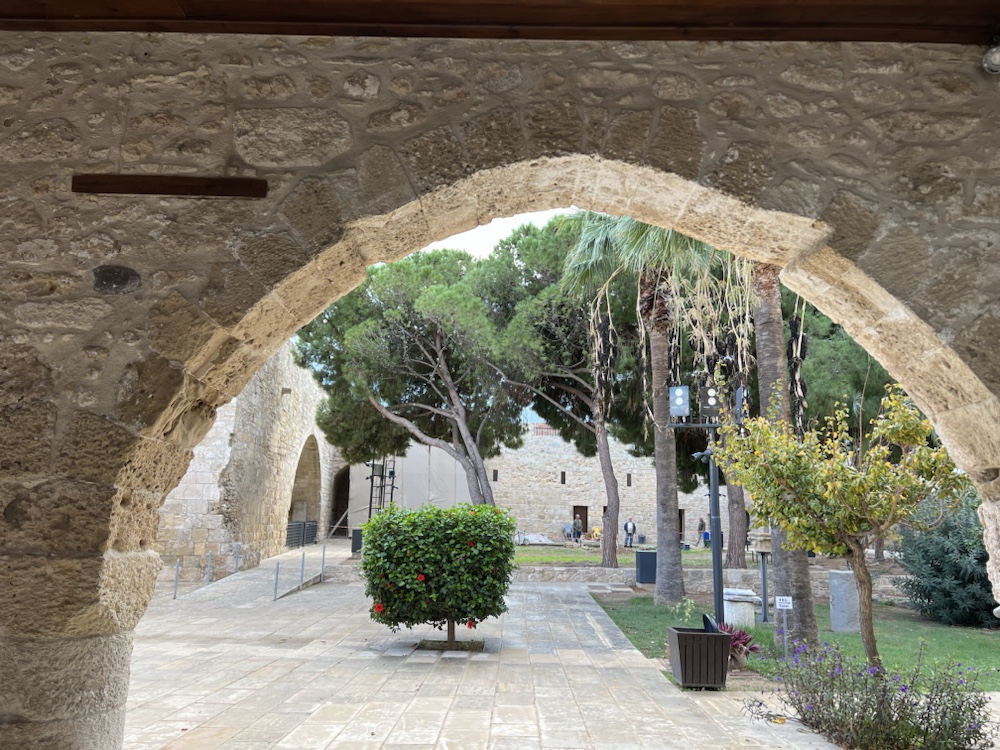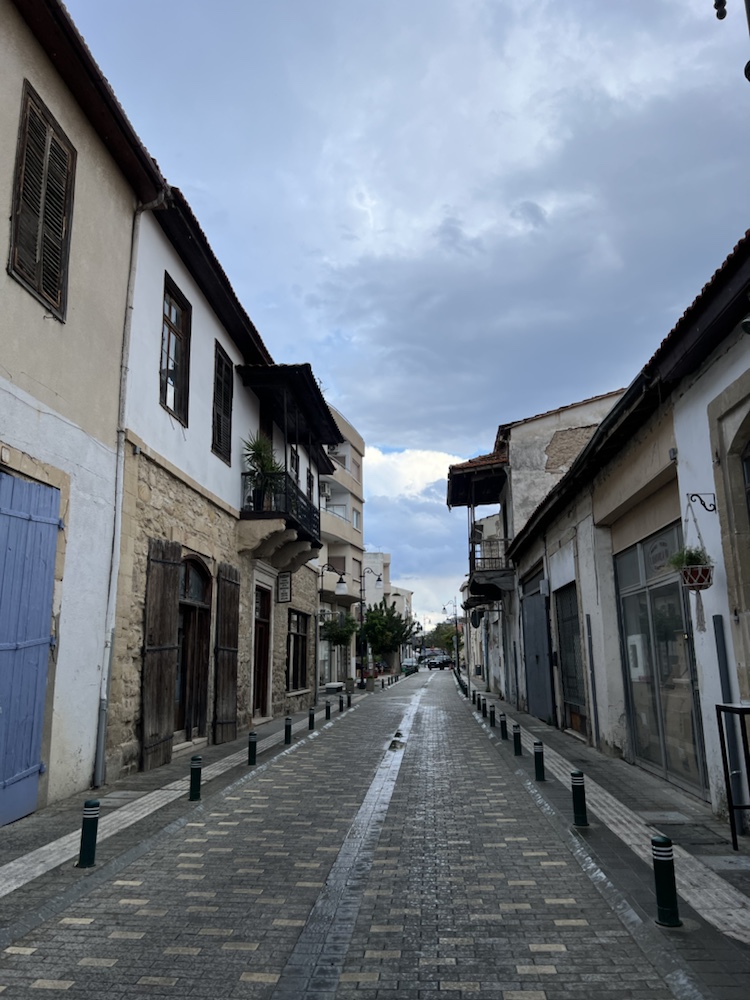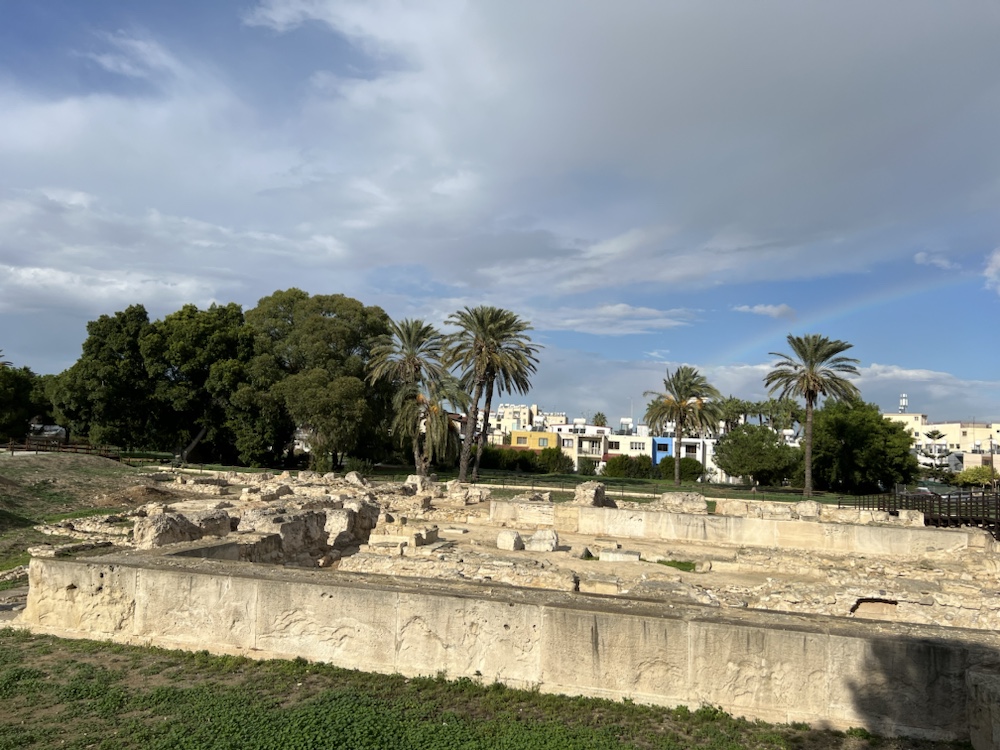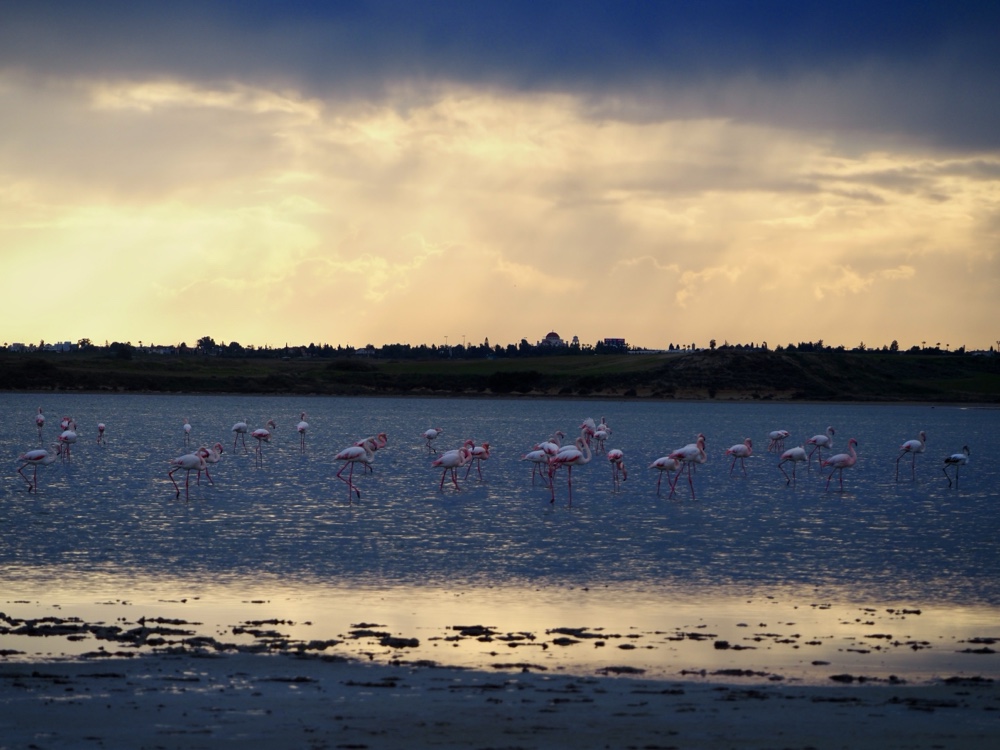
Neolithic village
I stop over in the neolithic village of Choirokoitia. Well, I try to, but I don’t recognize the stop, and the driver continues past the neolithic village entrance. After a panicked discussion with the driver, I am dropped off at a Mcdonalds and walk 45 minutes on the side of the road to get back. I leave my luggage at a bakery near the entrance and have a delicious pumpkin, rice and raisin pie.
The neolithic village is so worth it! The reconstruction of the houses involved archeologists and local builders who understand the traditional construction methods of the area. They tried to recreate the houses based on how they suspect it would have been made with mud bricks covered with earthen plaster.

I continue up the trail to see the foundations dating back to the 7th millennium BCE! I have never been to ruins so old before. It is interesting how the walls look like they could have been made in medieval times, but they’re all free of metal and simply use materials from Cyprus. The wall also does not appear to be defensive, but more of a community-defining feature, which is cute. Rocks jut out, which would be easy to climb anyways. The entrance is hidden, however, with a concealed staircase going up towards the houses. Only the circular foundations remain. Some features are visible, and it is really interesting following the wall down outside to the “newer” edge of the settlement, as they expanded beyond the enclosure over the millennia as the settlement grew.



I visit another bakery for a halloumi pie and don’t have to wait long for the next bus. I arrive in Larnaca, surprised to find quaint Ottoman architecture remaining on the streets surrounding the grand mosque. I don’t go inside, but I appreciate it from the exterior. It is next to a medieval fortress, but I also decide not to enter after visiting so many others on this trip. I also pass the famous cathedral of Lazarus (the guy who was resurrected, supposedly, and buried a second time here). The cloisters seem charming, but I instead opt for ruins.




These are the remains of the temple of the great goddess of Cyprus, a Mycenaean precursor to Aphrodite. The palace has drawings and inscriptions on the walls, some of which are indicative of boats. There are foundations of ancient baths and a small pool and several column foundations. Lots of walls and building foundations remain. These are over three thousand years old—the oldest being almost four thousand. It is cool to see how the bricks are laid and how that changes with the arrival of the Greeks.




I explore the town a bit and admire the Ottoman style. This is the first I’ve seen of it on Cyprus, though I recognize it immediately from the Balkans. I head over to the salt lake, just on a hunch to do some birding despite the on and off rain. Luggage in tow, I chuck it beneath a theater then go off trail to see the lake. The stormy clouds in the distance are menacing. The sun pierces through and creates a dramatic backdrop, which is reflected in the calm lake. It is muddy, and red with algae; I slip and slide as I approach on the mud flats to reach the lake. I am thrilled to see hundreds of flamingos feeding at the shoreline. They pose as they walk calmly through the water, though a bunch of them take off flying across. It is majestic watching them feed, and I can hear the sound of them swishing their bills against the sand. There are so many of them, some pinker than others, and they walk gracefully across in a procession beneath the dramatic sky.



























